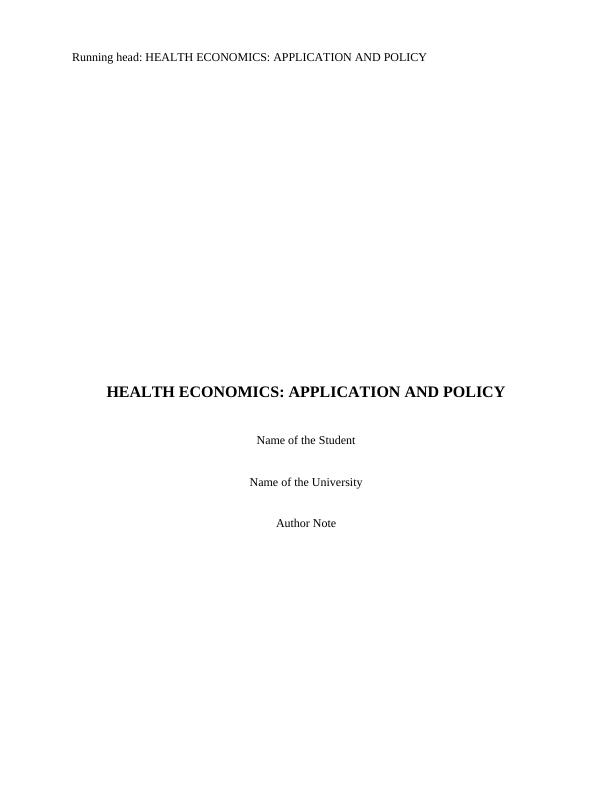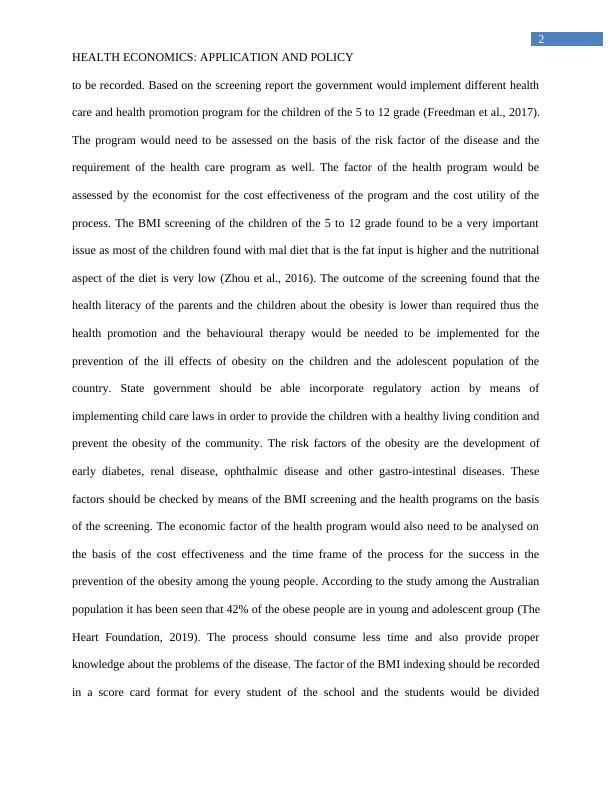Health Economics: Application and Policy
This assessment item requires students to apply their knowledge of key economic ideas and frameworks and also technical and analytical skills.
12 Pages2571 Words416 Views
Added on 2023-03-31
About This Document
This article discusses the application and policy of health economics in addressing obesity among children and adolescents. It explores the implementation of BMI screening and the cost effectiveness of health programs. The budget, time frame, and stakeholder involvement are also analyzed. Recommendations for successful program implementation are provided.
Health Economics: Application and Policy
This assessment item requires students to apply their knowledge of key economic ideas and frameworks and also technical and analytical skills.
Added on 2023-03-31
ShareRelated Documents
End of preview
Want to access all the pages? Upload your documents or become a member.
Report on Critical Issues in Public Health
|4
|1063
|47
Early Identification and Treatment of Obesity Issues Among Children
|21
|3896
|356
Screening Program for Obesity - Importance, Benefits, and Recommendations
|7
|1898
|187
Logic Model for Obesity Program
|8
|1137
|158
Prevention of Obesity in Children Management Analysis 2022
|5
|1126
|12
Evaluation of Obesity - Childhood Obesity
|15
|3489
|12




